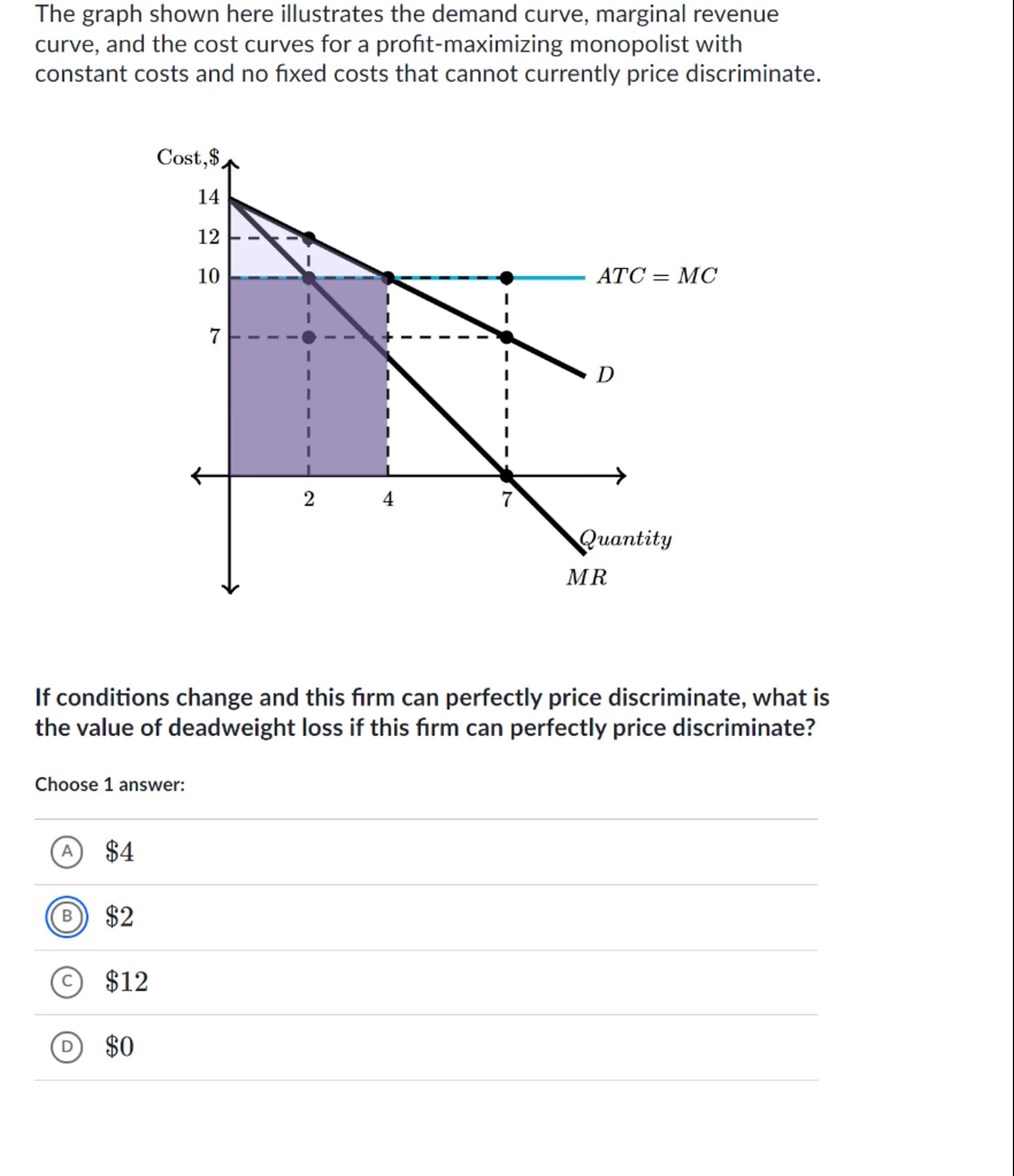
Sia

Question
Microeconomics
Posted over 1 year ago
The graph shown here illustrates the demand curve, marginal revenue curve, and the cost curves for a profit-maximizing monopolist with constant costs and no fixed costs that cannot currently price discriminate.
If conditions change and this firm can perfectly price discriminate, what is the value of deadweight loss if this firm can perfectly price discriminate?
Choose 1 answer:
(A)
(B)
(C)
(D) 

Answer from Sia
Posted over 1 year ago
Solution
a
Perfect Price Discrimination: When a firm can perfectly price discriminate, it charges each consumer the maximum price they are willing to pay. This eliminates consumer surplus and captures all the surplus as producer surplus
b
Deadweight Loss: In a monopolistic market without price discrimination, deadweight loss occurs because the monopolist produces less than the socially optimal quantity. However, with perfect price discrimination, the monopolist produces the socially optimal quantity, eliminating deadweight loss
c
Graph Analysis: The graph shows the demand curve (D), marginal revenue curve (MR), and the cost curves (ATC=MC). The shaded region represents the deadweight loss in the absence of price discrimination. With perfect price discrimination, this shaded region would be eliminated
d
Conclusion: Since perfect price discrimination eliminates deadweight loss, the value of deadweight loss in this scenario is
Answer
Key Concept
Perfect Price Discrimination
Explanation
Perfect price discrimination allows the monopolist to produce the socially optimal quantity, thereby eliminating deadweight loss.
Not the question you are looking for? Ask here!
Enter question by text
Enter question by image
Unlock Smarter Learning with AskSia Super!
Join Super, our all-in-one AI solution that can greatly improve your learning efficiency.
30% higher accuracy than GPT-4o
Entire learning journey support
The most student-friendly features
Study Other Question